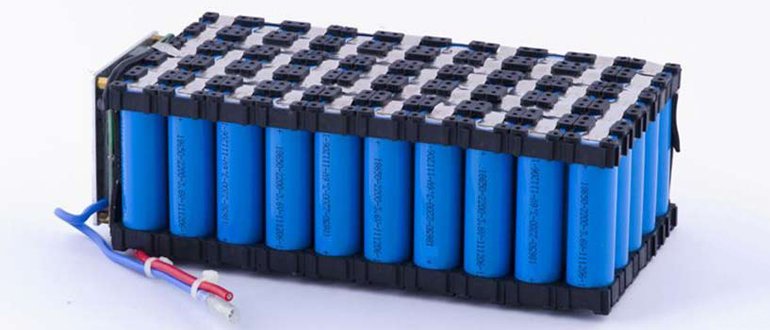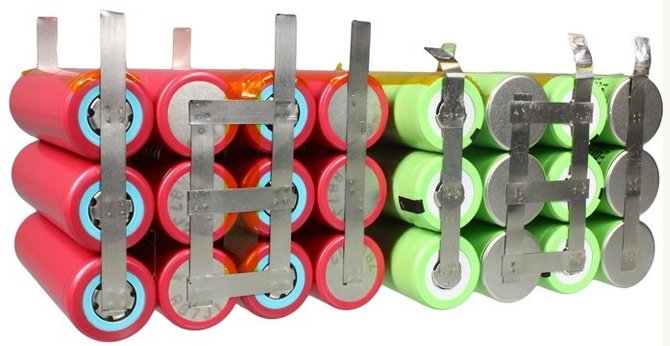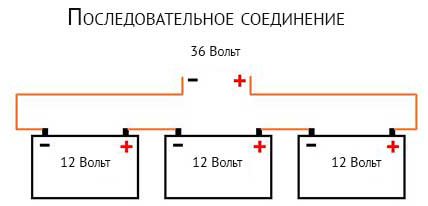When operating autonomous current sources, situations are often encountered when it is necessary to simultaneously use several elements connected in a certain way. This requires certain knowledge regarding the features of current flow in circuits with several power supplies. This article discusses the nuances of various methods of connecting batteries into a combination battery.
Content
Why connect batteries
Some self-powered devices require current and voltage values that are difficult to provide with available standard galvanic power supplies.
As a rule, this is the need for a more powerful output current, an increased value of voltage or capacitance. To solve these problems, it is required to create various configurations of current source connections, each of which has its own characteristics.
Battery Connection Options
There are three battery connection diagrams in assemblies with the required parameters:
- Serial - the voltage of all batteries is added;
- Parallel - the capacity develops;
- Combined series-parallel - to increase capacitance and voltage.
All of them have certain features that you need to know to ensure the safety and long-term operation of the batteries and the devices they feed.
The main requirement for all switching methods is to exclude the use of batteries manufactured by different technologies in the assembly (for example, Li-ion and Ni-Mh cannot be connected at the same time).
Battery Serial Connection
To ensure sufficient voltage and acceptable operating time of electrical appliances, batteries are often used in which the anodes and cathodes of the individual elements (sections) are sequentially interconnected by conductors.
The anode and cathode of the extreme power sources of the resulting combined battery are its common plus and minus. For a battery made of series-connected elements, the resulting voltage is equal to the sum of the voltages of the current sources used. The resulting capacity of the resulting battery is equal to that which has the weakest of the connected batteries. During operation of such an assembly, the same current flows through each element (both during charge and during discharge).
By connecting six batteries in series, each of which has a voltage of 1.2 volts and a capacity of 1200 mAh, an assembly of 6x1.2 = 7.2 v with a capacity of 1200 mAh will be obtained.
If the assembly will use elements with different capacities, then those that have a lower capacity will have a higher internal resistance compared to others. The voltage drop across them will be greater, which will lead to a quick discharge of the weakest element in the process.
At the same time, more powerful assembly batteries will still be operational and the assembly will be operated on. This will lead to a strong discharge of the weakest battery, which will reduce its resource and capacity.
When charging such an assembly, the weakest battery is charged before other elements, but due to the fact that the others have not yet been charged, the charging current will continue to flow through it, which will lead to overcharging and overheating.This is especially dangerous for batteries that contain lithium compounds due to their increased sensitivity to overcharge and strong discharge.
Important! Ultimately, a constantly repeated amplified discharge and recharging of a weak assembly element will quickly lead to its failure. Therefore, in series connection, elements of equal capacity should be used. This can only be achieved by using power supplies manufactured by the same manufacturer, preferably from the same batch.
It is better to charge each power source of the collection battery separately, or use an equalizing charge with voltage control (current regulation) on each element.
Parallel Battery Connection
In this case, all anodes are connected with one common conductor, and with the other are all cathodes of connected batteries. This circuit is used when an increased amperage of the collection battery is needed.
The total capacity (supplied current) of the resulting assembly is equal to the sum of the capacities (passing currents) of the connected power sources. Its voltage will be equal to the voltage of the cell with the largest electromotive force, and it will be the same on all sources of the resulting battery.
With a parallel connection of six batteries, each of which has a voltage of 1.2 volts and a capacity of 1200 mAh, an assembly of 1.2v with a capacity of 6 * 1200 = 7200 mAh will be obtained.
Attention! When several identical sources with different voltage are connected in parallel, current flows from a source with a higher voltage to an element with a lower voltage.
This has a devastating effect on those that have less capacity. Due to the flow of currents, it is forbidden to connect disposable batteries in parallel, in which it leads to the charging of cells with a lower voltage, their overheating, leakage of electrolyte or even explosion.
In the case of a parallel connection of a source with a large voltage of small capacity to an element of a larger capacity, but with a lower voltage, an electric short circuit of a weak battery occurs through a lower internal resistance of a strong one. Because of this, a strong current flows in a weak source, which leads to its gradual destruction.
In the case of high voltage on a battery with a larger capacity, an accelerated charge of a weak element occurs, which also has a detrimental effect on it. Based on this, before assembling the battery, it is recommended to equalize the voltages of each of its cells to the same value.
Important! To exclude the destructive effect of current overflow during parallel connection of batteries, batteries with the same voltage should be used.
Series-parallel connection of batteries
If you take into account the rules for connecting batteries into serial and parallel assemblies, you can create complex combined options with the simultaneous use of both methods. This allows you to increase the resulting capacitance and voltage, which is especially necessary in autonomous energy supply systems, electric vehicles and other devices with a large consumption of electric current.
The combination battery can be assembled in two ways:
- The required number of series-connected assemblies with the required voltage is compiled, and then they are combined into a single battery using parallel switching.
- Batteries are created with parallel connected batteries of the required capacity, which are then sequentially switched until the desired voltage is set.
Important! It must be understood that even if all the connection rules are observed, it is impossible to select batteries with absolutely identical characteristics. This will inevitably lead to an imbalance in capacitance and voltage values, which over time will lead to increased wear of weaker batteries.
Connection Precautions
With all battery connection methods, a number of precautions must be observed:
- observe safety measures for the operation of electrical installations to exclude electric shock (the main thing is not to create a current path through the human body):
- observe the polarity of the connection;
- Do not create short circuits;
- when assembling the batteries, disconnect the load from them;
- connect the charger to the battery when it is disconnected from the network;
- work should be carried out in appropriate insulating clothing and shoes, without metal objects that could fall and short-circuit the contacts;
- Do not touch the battery terminals with your hands, especially with two hands at different poles (this is very dangerous on powerful batteries with high voltage);
- use a special tool with insulated parts;
- do not work in poor health;
- take into account the currents passing through the collection battery and the load and use conductors suitable for the cross section;
- when connecting the elements into one battery, ensure reliable and isolated contact from external influences;
- to provide reliable protection of prefabricated batteries from short circuits and moisture;
- use batteries with the same characteristics and degree of wear;
- carefully check the assembled battery for commutation errors.
What can cause errors when connecting the battery
To eliminate errors when connecting the batteries, it is advisable to use special connectors that eliminate switching errors, for example, T-Plug adapters. If the batteries are connected incorrectly in the same assembly, errors can be made that can lead to very serious consequences:
- with a parallel connection, a short-circuited circuit is formed, as a result of which a violent chemical reaction will occur in the batteries, which will very quickly lead to leakage of electrolyte, deformation of the case, fire or even explosion;
- when connected in series with the wrong polarity, the circuit is open, but when the load is connected, a reverse current may appear through the incorrectly connected element, which will damage it;
- with a long short circuit of one or several batteries, ignition of the insulation, melting of conductors, violent reaction inside the battery, leakage of electrolyte, deformation of the housing, fire or explosion is inevitable;
- with a short-term short circuit of the contacts, the battery will remain operational, but deterioration of the state of the electrodes inside the battery, a decrease in capacity may occur;
- when using conductors that are not designed for working currents, they will overheat, their insulation will melt, which can lead to a short circuit and the ensuing consequences.
Have questions or have something to add? Then write to us about it in the comments, this will make the material more complete and accurate.











On the smartphone, the tablet did not heat up the battery, never